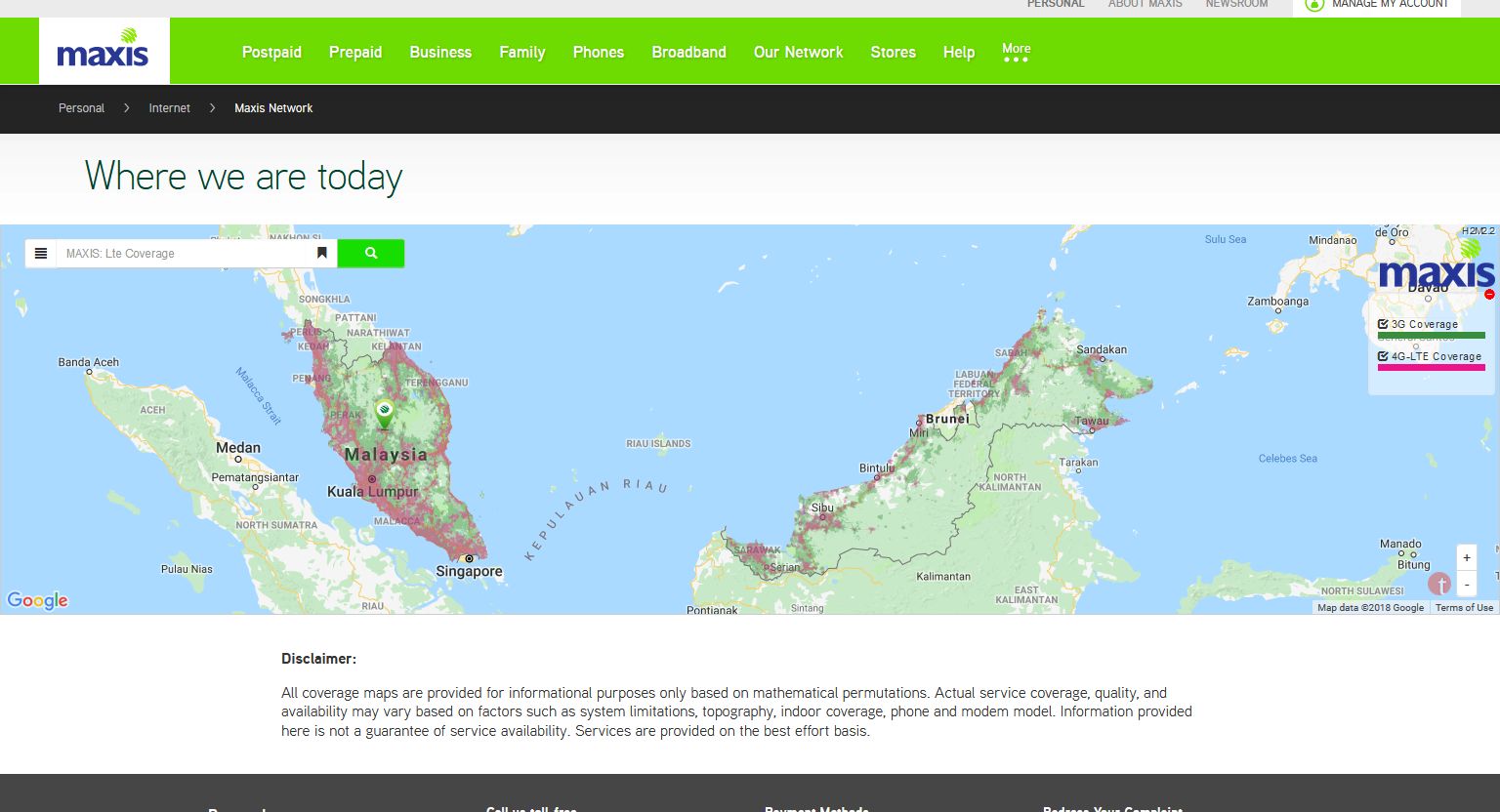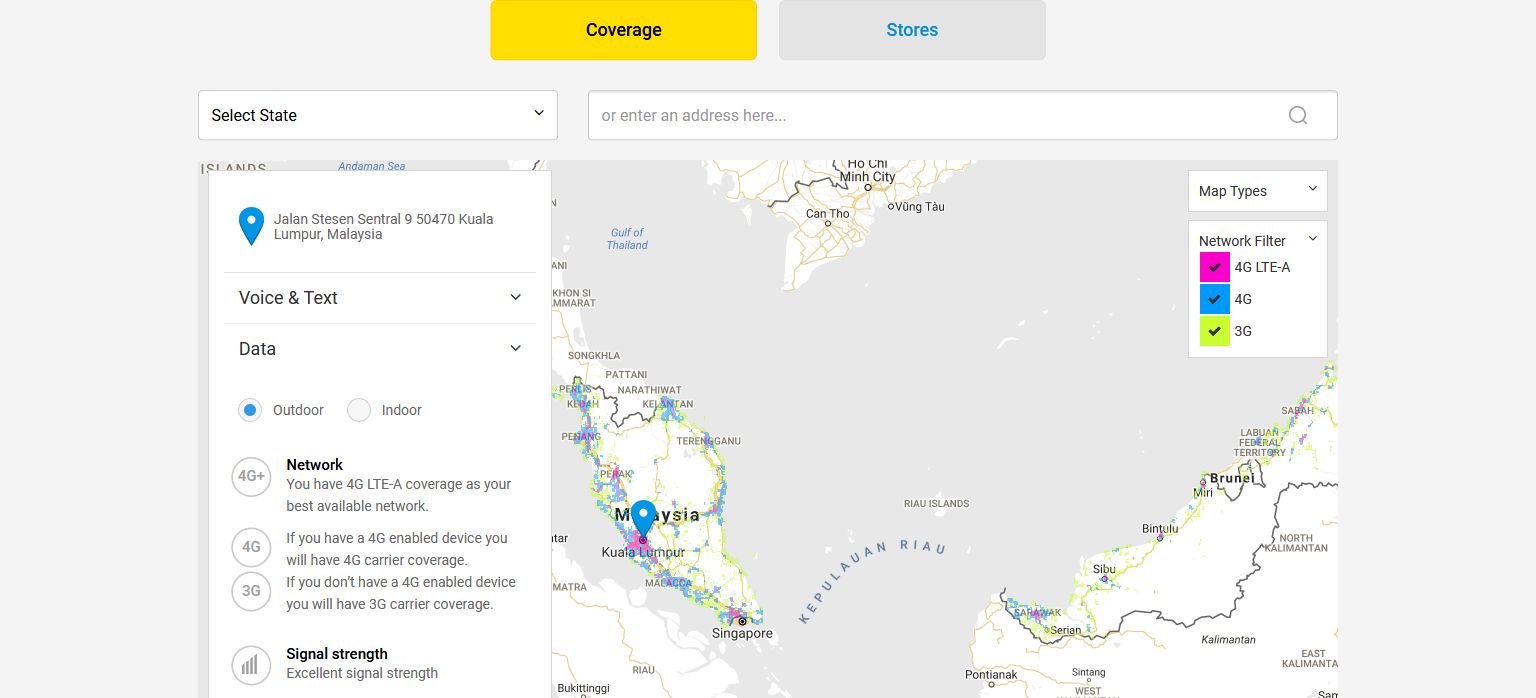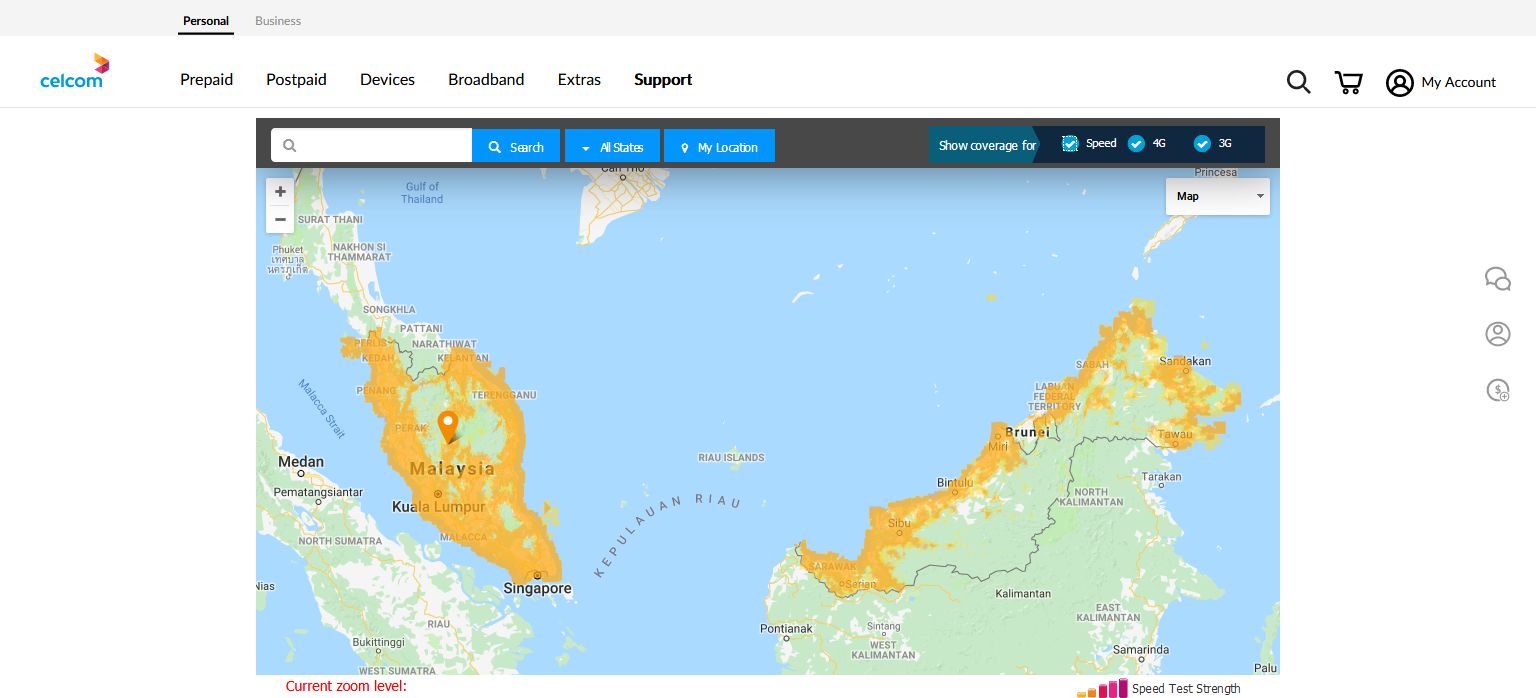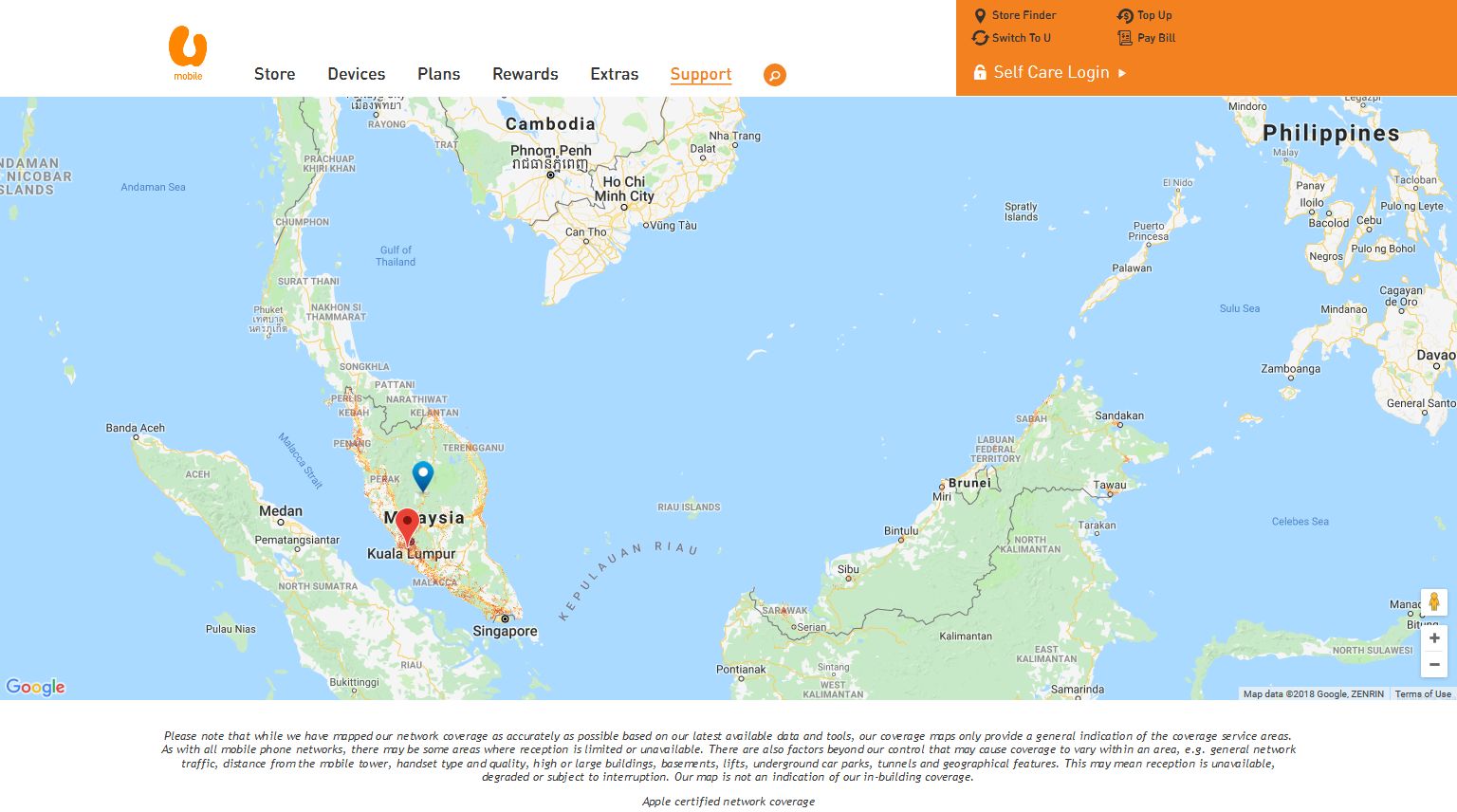Malaysia Telcos lies about their coverage, in my opinion.
As a mobile user, I don’t think the Telcos are telling the truth about their actual mobile coverage- 3G and 4G.
Here’s what the four major mobile operators claims about their coverage, as of today:
Maxis

As of June 2018, Maxis claims that its 4G LTE network now covers 92% of the human population in the country, likely measured based on -110dBm quality criteria. In 2015, Maxis said its 3G coverage was at 91%.
Despite these big claims on coverage, Maxis has posted the following message on its “Coverage Map” page.
Disclaimer:
All coverage maps are provided for informational purposes only based on mathematical permutations. Actual service coverage, quality, and availability may vary based on factors such as system limitations, topography, indoor coverage, phone and modem model. Information provided here is not a guarantee of service availability. Services are provided on the best effort basis.
Maxis Coverage Map- [link]
Digi

As of June 2018, Digi claims that its 4G LTE network now covers 89% of the population, LTE-A at 58%. 3G coverage stood at 86.6% in 2015.
Digi Coverage Map- [link]
Celcom

As of March 2018, Celcom 4G and 4G LTE-A population coverage stands at 88% and 76% respectively. Celcom has over 90% 3G coverage at the end of 2016.
Celcom posted the following on its “Coverage Checker” page:
Disclaimer: All coverage maps provided are for informational purposes only and are generated based on mathematical permutations. Actual service coverage, quality and availability may vary according to factors such as system limitations, topography, blockage, indoor coverage, phone and modem model. Services are provided on as available basis and please note that information provided here is not a guarantee of service availability.
Celcom Coverage Map- [link]
U Mobile

In 2015, U Mobile claims that it has a human population coverage of 78% for 3G (including its 3G RAN sharing with Maxis) and 27% for 4G LTE nationwide. Its 3G coverage is likely smaller now since the Telco decided to terminate its network agreement with Maxis. The Telco does not disclose its latest coverage statistic since it is not a public listed company.
U Mobile posted the following on its “Coverage Map” page:
Please note that while we have mapped our network coverage as accurately as possible based on our latest available data and tools, our coverage maps only provide a general indication of the coverage service areas. As with all mobile phone networks, there may be some areas where reception is limited or unavailable. There are also factors beyond our control that may cause coverage to vary within an area, e.g. general network traffic, distance from the mobile tower, handset type and quality, high or large buildings, basements, lifts, underground car parks, tunnels and geographical features. This may mean reception is unavailable, degraded or subject to interruption. Our map is not an indication of our in-building coverage.
Apple certified network coverage
U Mobile Coverage Map- [link]
Comment
Below are some points that I would like to highlight to MCMC.
A REAL Coverage Map, not estimated coverage
Its time for mobile operators to admit about areas where they don’t have coverage. If you look at their coverage maps, KL seem to have almost 100% coverage. But here’s the truth, there are many blind spots in KL, especially indoor and in some cases, even outdoor.
I remember, two years ago, the street in front a condo where I used to live in KL had no coverage. Three of the mobile operator had zero 3G/4G LTE coverage however their coverage map indicated good signal at the area. So I brought the issue up to the respective Telcos. Eventually, 3 months later, 2 of the mobile operator built a new base station and now the street has full mobile signal. The third mobile operator also managed to improve coverage although not full signal bars.
MCMC must hold Telcos accountable on the mobile coverage they claim. If the Telcos say that they have outdoor coverage at a particular area, then they better do.
If the Telcos refuse to be honest about their coverage map, MCMC could set up its own coverage map based on the complaints it receive. This way, these anonymous user data are public and the Telco would think twice about making too much noise about their “great” network.
MCMC Must Set the Standard for Coverage Measurement
MCMC, being the regulator, should set the standard in mobile coverage measurement. At the moment, the Telco’s measurement on coverage are not consistent. For example, Digi’s coverage at 89% nationwide is measured at -110dbm, which equals to 1 signal bar or none. To me, this cannot be considered “usable coverage” and insulting to users. Let me explain.
Some of you probably notice at night that your mobile internet speed is slow and if you look closely, you might notice that your signal reception bars are fewer (or unstable) compared to what you normally experience in the day. I normally experience this with Digi and U Mobile due to their smaller number of base stations. This is because the base station serving you is most likely congested and it causes the coverage to shrink as more users are connected to it. In this scenario, those who are at the edge of the coverage (where Digi is measuring at -110dbm) will be experiencing zero coverage or super slow internet.
Question for MCMC: If I can get weak signal but not able to make calls or use the Internet, will this be still considered coverage?
Coverage measurement should be practical and based on real user experience. MCMC should set the coverage measurement standard at -98dbm (about 2 bar) or lower as this is a more practical coverage for users.
In my experience, Telcos like Digi, which claims to have 89% 4G LTE coverage, in reality only has around 40% coverage which is usable in real life. This applies to Maxis, Celcom and U Mobile as well, just divide their coverage % by half.
The Telcos claims that these are “human population coverage”, however their coverage measurement does not take into account coverage for indoor buildings. There are no humans in-buildings?
MCMC must hold the Telcos Accountable for Poor Coverage
A true 100% nationwide coverage is an impossible task. I understand that.
Telcos face challenges from local councils, state-backed tower companies and even the public to build base stations.
Despite these, Digi claims to have 89% 4G LTE coverage, Celcom 88%, Maxis 92% and U Mobile 27%. So, why do I still experience poor coverage in KL and cities nationwide.
When was the last time MCMC issued a compound for poor/no coverage? Was it 2 years ago?
What is MCMC doing about Telcos that claims to have coverage in a particular area but in reality they don’t. Shouldn’t these Telcos be held responsible?
The problem right now is this- Telcos never admit that they don’t have coverage, they just leave users in the dark. They don’t even tell customers on when they plan to improve the coverage, and even if they do, they were never able to fulfill in time what they promised.
Sometimes, Telcos may have to take down a base station due to certain issues. However, they never inform users registered at those particular area that they will experience poor/zero coverage. If you call your Telco to make a complaint, its high likely that your complaint gets buried and marked closed in 3 days. What they do is write a remark that your area will have improved coverage in 3-months to 1 year time. And since your complaint is now marked close, Telcos like Maxis and Celcom consider that you are a Happy customer.
The painful truth is, your complaint will not even matter unless you are some sort of a VIP.
In my opinion, if a Telco claims to have coverage at an area but they don’t in reality, you should enjoy some some sort of rebate in phone bill if you spend about 20 hours a week at that particular area. Its not your fault if the Telcos lied about their coverage and they should compensate your for their poor service. However, if the Telco were able to pinpoint this poor coverage location on their coverage map and a timeline to fix it, they should be excused.
Conclusion
Over the past decade, there are probably millions of complaints out there on poor coverage. Just check out the Facebook pages of the Telcos and you can find new complaints everyday on coverage related issued.
MCMC have issued multiple compounds in the past but this doesn’t seem to resolve the problem. Will MCMC ever be able to fix coverage issues?
In Singapore, Infocomm Development Authority of Singapore (IDA), the communication regulator, has ensured that 4G networks cover at least 95% of outdoor areas, and this was July last year. As of July 2018, the IDA has set the 4G coverage in tunnels to be at least 99%, and from January 2019, coverage inside buildings must be at least 85%. Operators who fail to meet the standards may be fined up to S$50,000 (estimated RM150k) per month for each instance of non-compliance. The IDA also has an app called IMconnected to measure mobile user’s experience.
In comparison, MCMC doesn’t even have a proper user app and most of its research/public reports are outdated. I am also not aware of coverage guidelines set by MCMC and if those are being enforced. If they were being enforced, operators like Altel (Puncak Semangat) won’t be allowed to hold on to the LTE spectrum for years and not deploy any coverage.
In my opinion, unlike Singapore, the Telcos in Malaysia does not fear MCMC. From my observation, in the past, MCMC was more focused on political matters. It has never given enough attention on consumers, at least not to my satisfaction.
Dear Minister of Multimedia and Communication, Gobind Singh Deo, if you are reading this, its time for consumer’s voice to be heard in the Industry. Please fix mobile coverage issues for once and all.
P.s: Did you know that foreigners in Malaysia enjoys a better mobile coverage than us, Malaysians? A roaming sim allows a foreigner to roam on Maxis, Celcom, Digi and U Mobile and they get to pick the best and fastest network at a particular area (Note: Roaming is expensive).









